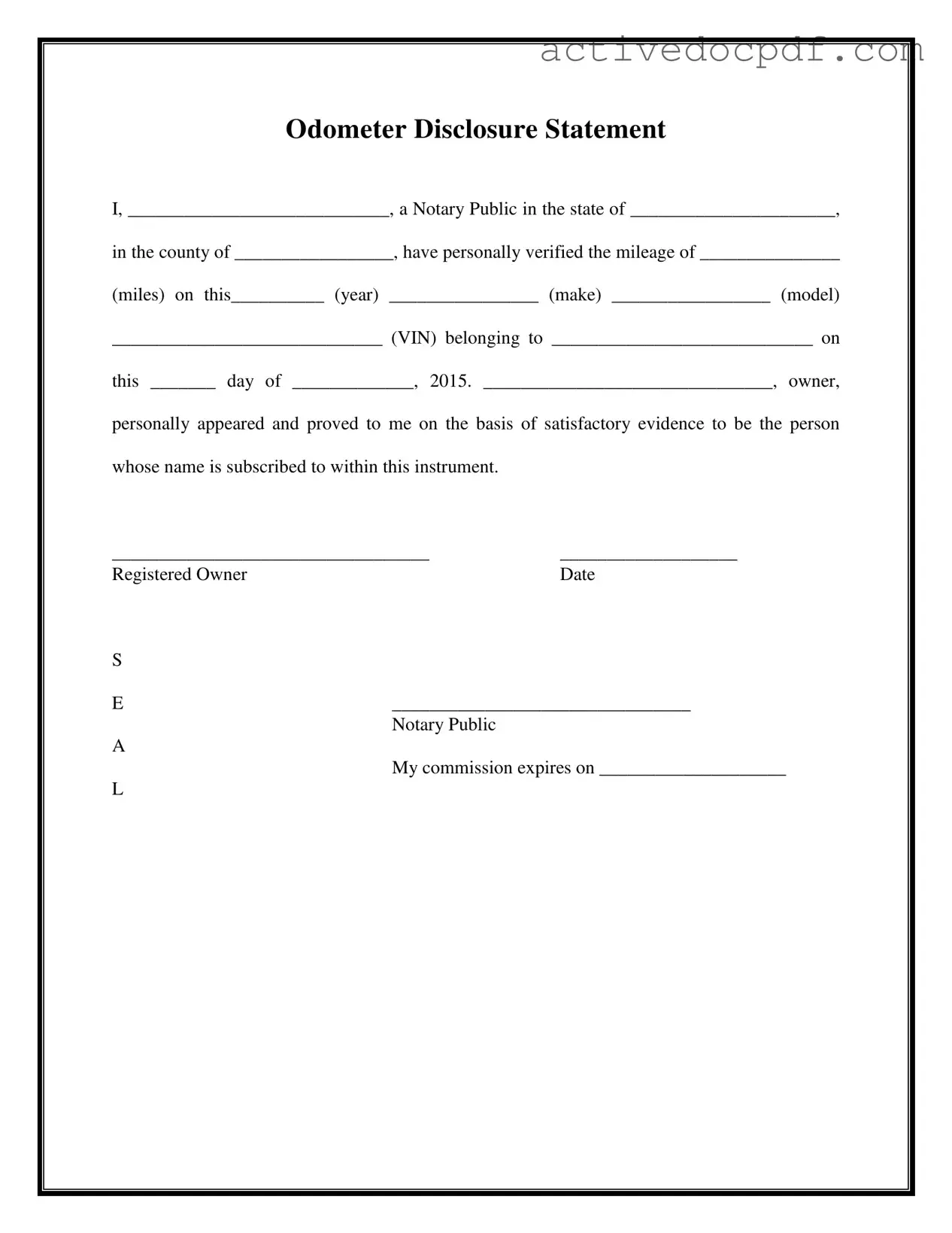What is a Notarized Odometer Statement?
A Notarized Odometer Statement is a legal document used to certify the mileage of a vehicle at the time of sale. This form is signed by the vehicle owner and notarized by a public notary to verify its authenticity. It serves as proof of the vehicle's mileage to protect both the buyer and seller from potential fraud.
Why do I need a Notarized Odometer Statement?
This statement is often required when transferring ownership of a vehicle. It helps to ensure that the mileage reported is accurate. Many states mandate this document to prevent odometer fraud, providing legal protection for both parties involved in the transaction.
Who can complete a Notarized Odometer Statement?
The vehicle's registered owner is responsible for completing the statement. The owner must provide accurate mileage information and details about the vehicle, including its make, model, and Vehicle Identification Number (VIN). A notary public will then verify the owner's identity and witness the signing of the document.
The Notarized Odometer Statement requires the following information:
-
The name of the notary public.
-
The state and county where the notarization takes place.
-
The verified mileage of the vehicle.
-
The year, make, model, and VIN of the vehicle.
-
The name of the registered owner.
-
The date of notarization.
How do I find a notary public?
You can find a notary public through various sources:
-
Local banks and credit unions often have notaries on staff.
-
Public libraries may offer notary services.
-
Online directories and websites can help you locate a notary nearby.
-
Mobile notary services can come to your location for convenience.
Is there a fee for notarization?
Yes, notaries typically charge a fee for their services. Fees can vary based on location and the notary's policies. It is advisable to inquire about the cost before scheduling an appointment.
What happens if the mileage is incorrect?
If the mileage reported on the Notarized Odometer Statement is found to be incorrect, it can lead to legal issues, including potential fraud charges. Both the buyer and seller may face complications. Therefore, it is crucial to provide accurate information when completing the form.
The Notarized Odometer Statement can be used for most vehicles, including cars, trucks, and motorcycles. However, specific requirements may vary by state. Always check local regulations to ensure compliance when transferring ownership of a vehicle.
How long is the Notarized Odometer Statement valid?
The Notarized Odometer Statement remains valid as long as the information contained within it is accurate. Once the vehicle is sold, the statement serves its purpose for that transaction. If the vehicle is sold again, a new statement must be completed.
